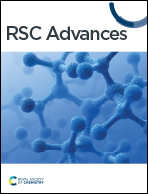Sputtered anti-reflection layer on transparent polyimide substrate improves adhesion strength to copper layer: effects of layer thickness and sputtering power
Abstract
In order to shield the electronic circuits on a transparent polyimide (PI) substrate, an anti-reflection (AR) layer was deposited on a PI film via DC reactive magnetron sputtering. The effects of sputtering power and thickness of AR layer on the optical property and adhesion strength of the PI were investigated. The composition of the AR layer influences the bonding between layers. Sufficient thickness of the AR layer is essential to strengthen the adhesion between the PI and copper (Cu) layers. The sputtered AR layer on the PI also improves the barrier property for water vapor. The AR layer-sputtered PI substrates remain transparent and exhibit high peel strength to the Cu layer, suggesting their potential applications as reliable transparent substrates for modern electronic devices.



 Please wait while we load your content...
Please wait while we load your content...